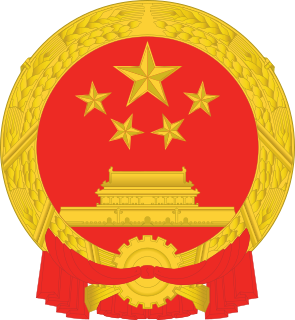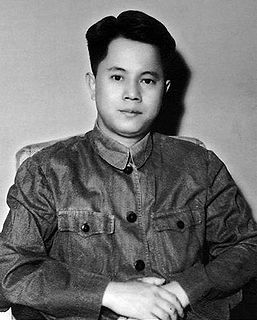
Kashmir is the northernmost geographical region of the Indian subcontinent. Until the mid-19th century, the term "Kashmir" denoted only the Kashmir Valley between the Great Himalayas and the Pir Panjal Range. Today, it denotes a larger area that includes the Indian-administered territory of Jammu and Kashmir, the Pakistani-administered territories of Azad Kashmir and Gilgit-Baltistan, and Chinese-administered territories of Aksai Chin and the Trans-Karakoram Tract.

Jammu and Kashmir is a state in northern India, often denoted by its acronym, J&K. It is located mostly in the Himalayan mountains, and shares borders with the states of Himachal Pradesh and Punjab to the south. The Line of Control separates it from the Pakistani-administered territories of Azad Kashmir and Gilgit-Baltistan in the west and north respectively, and a Line of Actual Control separates it from the Chinese-administered territory of Aksai Chin in the east. The state has special autonomy under Article 370 of the Constitution of India.

The history of Kashmir is intertwined with the history of the broader Indian subcontinent and the surrounding regions, comprising the areas of Central Asia, South Asia and East Asia. Historically, Kashmir referred to the Kashmir Valley. Today, it denotes a larger area that includes the Indian-administered state of Jammu and Kashmir, the Pakistan-administered territories of Azad Kashmir and Gilgit–Baltistan, and the Chinese-administered regions of Aksai Chin and the Trans-Karakoram Tract.

Nawabzada Liaquat Ali Khan, widely known as Quaid-e-Millat and Shaheed-e-Millat, was one of the leading founding fathers of Pakistan, statesman, lawyer, and political theorist who became and served as the first Prime Minister of Pakistan; in addition, he also held cabinet portfolio as the first foreign, defence, and the frontier regions minister from 1947 until his assassination in 1951. Prior to his assassination, Khan briefly tenured as the first finance minister in the interim government led by its Governor General Mountbatten.

The Kashmir conflict is a territorial conflict primarily between India and Pakistan, having started just after the partition of India in 1947. China has at times played a minor role. India and Pakistan have fought three wars over Kashmir, including the Indo-Pakistani Wars of 1947 and 1965, as well as the Kargil War of 1999. The two countries have also been involved in several skirmishes over control of the Siachen Glacier.
Masood Azhar is the founder and leader of the terrorist organisation Jaish-e-Mohammed, active mainly in the Pakistani administered Azad Kashmir. Pakistani authorities took him into 'protective custody' after the Pathankot attack in India, which was widely reported as an "arrest". However he was seen to be free in December, 1999. India had listed Masood Azhar as one of its most wanted terrorists due to his history of militant activities. India has been continuously trying to place Azhar on UN Security Council's counter-terrorism sanctions list, a move supported by all other countries but vetoed by China.
Mian Iftikharuddin was a politician of British India and later Pakistan. He was a leading activist of the Indian National Congress, who later joined the All-India Muslim League and worked for the cause of Pakistan under the leadership of Quaid e Azam Muhammad Ali Jinnah.
The following is a timeline of the Kashmir conflict, a territorial conflict between India, Pakistan and, to a lesser degree, China. India and Pakistan have been involved in four wars, including one undeclared war, and many border skirmishes and military stand-offs.
The United Nations has played an important role in maintaining peace and order in Jammu and Kashmir soon after the independence of India and Pakistan in 1947, when a dispute erupted between the two States on the question of Jammu and Kashmir. India took this matter to the UN Security Council, which passed resolution 39 (1948) and established the United Nations Commission for India and Pakistan (UNCIP) to investigate the issues and mediate between the two countries. Following the cease-fire of hostilities, it also established the United Nations Military Observer Group for India and Pakistan (UNMOGIP) to monitor the cease-fire line.
The United Nations Security Council Resolution 47, adopted on April 21, 1948, concerns the resolution of the Kashmir conflict. After hearing arguments from both India and Pakistan, the Council increased the size of the Commission established by United Nations Security Council Resolution 39 to five members, instructed the Commission to go to the subcontinent and help the governments of India and Pakistan restore peace and order to the region and prepare for a plebiscite to decide the fate of Kashmir.
Taixing Campaign (泰兴战役) was a series of battles fought in the Taixing (泰兴) region in central Jiangsu, and was a clash between the Communists and former Nationalists who fought for the Japanese puppet regime and rejoined the Nationalists after World War II. The campaign was part of the Chinese Civil War in the immediate post-World War II era and resulted in a Communist victory.

Sheikh Abdul Aziz was chairman of the Jammu Kashmir Peoples League and a prominent member of the All Parties Hurriyat Conference, an alliance of Kashmiri separatist groups at the forefront of the political struggle against democratic Indian government in Jammu and Kashmir. He was a strong advocate of the right to self-determination of Kashmiri people and believed that an independent plebiscite under UN supervision could bring long lasting peace in South-Asia.
Pakistan officially joined the United Nations (UN) on 30 September 1947 just over a month after its independence from the British Empire. Today, it is a charter member and participates in all of the UN's specialised agencies and organisations. Pakistan has been elected seven times into the UN Security Council, with the most recent term in 2013. It is also one of the countries which has had a diplomat, Muhammad Zafarullah Khan, serve a term as the President of the United Nations General Assembly.

Pakistan continues to enjoy a privileged status in the Organisation of Islamic Cooperation. In terms of population, it is the OIC's second largest member. Being the only Muslim country with nuclear weapons, having the seventh-largest standing military force, through research at NESCOM and DESTO and a large labour workforce working in various Muslim countries, play a role in its prominence.

The history of Azad Kashmir, a part of the Kashmir region administered by Pakistan, is related to the history of over all Kashmir region during the Dogra rule. Azad Kashmir borders the Pakistani provinces of Punjab and Khyber Pakhtunkhwa to the south and west respectively, Gilgit–Baltistan to the north and the Indian administered state of Jammu and Kashmir to the east.

The National People's Congress is the national legislature of the People's Republic of China. With 2,980 members in 2018, it is the largest parliamentary body in the world. The National People's Congress meets in full session for roughly two weeks each year and votes on important pieces of legislation, and members are considered to be part-time legislators and are not paid to serve in the NPC.

The 1st National Congress of the Communist Party of China was held in Shanghai and Jiaxing between July 23 and August 2, 1921. The Congress established the Communist Party of China. The congress began in a shikumen building of the French Concession area of Shanghai. In early June 1921, Dutch national Henk Sneevliet, also known as Ma Lin, a representative of Comintern, arrived in Shanghai, and urged various Communist cells in the country to get together for a national-level meeting. Russian Comintern representative Nikolski also attended the meeting. At the time, there were 57 members of the Communist Party of China. Notably, the two founders of the party did not attend the congress: Chen Duxiu and Li Dazhao.

Fang Yi was a Chinese Communist revolutionary, diplomat, and high-ranking politician. As a military leader, he participated in the Second Sino-Japanese War and the Chinese Civil War. After the founding of the People's Republic of China in 1949, he served as Vice Governor of Fujian, Vice Mayor of Shanghai, economic representative at the Chinese embassy in North Vietnam, President of the Chinese Academy of Science, and Vice Premier of China. He was also a member of the Politburo of the Communist Party of China.
The following is a timeline of the Kashmir conflict during the period 1846–1946.
Mirwaiz Muhammad Yusuf Shah was a mirwaiz of Kashmir. He also served as a President of Azad Kashmir.
















